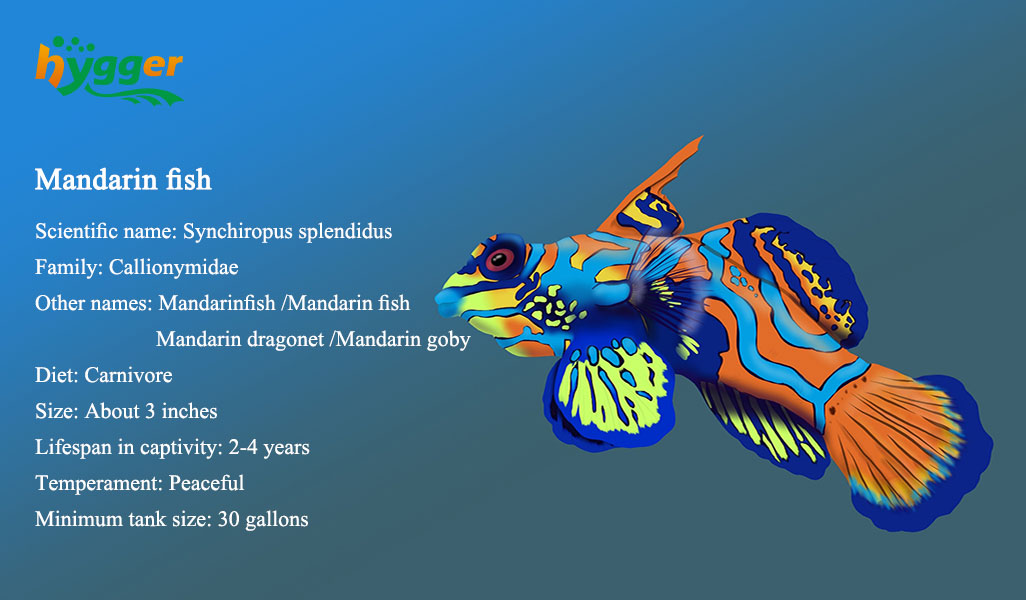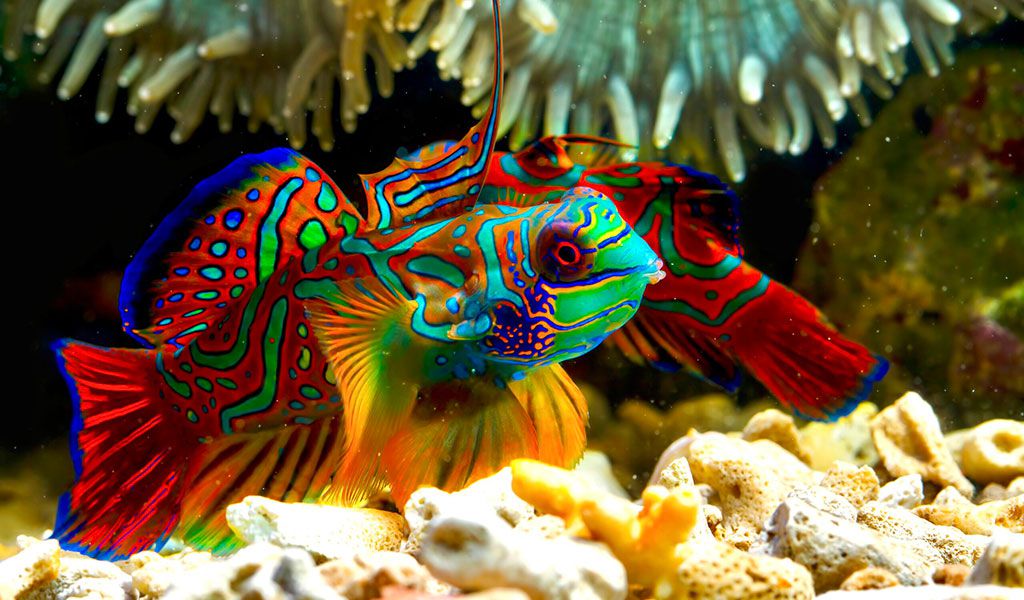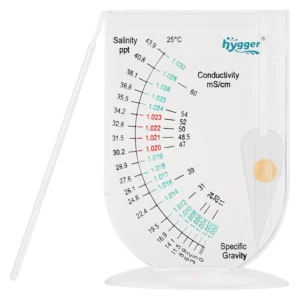Fish Profiles – The Amazing Looking Mandarinfish
Mandarin fish are small saltwater fish, featuring aesthetically pleasing and appealing. They are popular among aquarists. Also, mandarin fish come in dark green, red, orange, etc. Furthermore, they have red, orange, blue, and yellow stripes, plus black spots with yellow and red edges. It makes the fish look colorful. In today’s article, we will share more about mandarin fish, like how to keep them.
Are mandarin fish poisonous
Get to know mandarin fish
As a brilliant fish, mandarin fish do add color to saltwater aquariums. Moreover, mandarin fish are small, elongated, and scaleless. They can form blue pigment, forming blue patterns on the body. Besides, mandarin fish can live up to 15 years in the wild, however, reaching 2–4 years in captivity.
| Scientific name | Synchiropus splendidus | Temperament | Peaceful |
| Family | Callionymidae | Water temperature | 71-81 ℉ /22-27 ℃ |
| Other names | Mandarinfish /Mandarin fish /Mandarin dragonet /Mandarin goby | pH level | 8.1–8.4 |
| Diet | Carnivore | Water hardness | 8-12 dKH /5-15 dGH |
| Size | About 3 inches | Specific gravity | 1.020–1.026 |
| Lifespan in captivity | 2–4 years | Minimum tank size | 30 gallons |
Mandarin fish are poisonous? Yes or No?
The epidermis of mandarin fish contains two secretory cell types. One produces mucus to protect fish from threats because of bad living conditions. Another is to produce toxins to avoid attack from predators. Covered with tiny spines on the body, fish would inject toxic mucus into anybody posing threats to them.

What do mandarin fish eat
In the wild, mandarin fish usually live on coral reefs, but they are less active. Commonly, they consume small crustaceans, invertebrates, and fish eggs. In captivity, they prefer live foods, like brine shrimp. If you start with the feed, the fish may refuse to eat and even starve to death. Hence, keep in mind – larger tanks and more live food for mandarin fish.
Mandarin fish are carnivores and they are picky in aquariums. Mandarin fish seldom consume frozen or prepared foods. The available foods for captive mandarin fish include copepods, brine shrimp, mysis shrimp, black worms, etc.
How to feed mandarin goby
Mandarin goby tank set up
Mandarin goby are peaceful and shy. Though they swim slowly, sometimes they would try to jump out of aquariums. Hence, adding an aquarium lid is necessary.
Besides that, mandarin fish usually stay at the bottom of the tank and will not disturb other fish. However, once they are threatened, the fish will hide in the sand substrate, corals, live rocks, etc. Consequently, adequate hiding places are critically crucial.
Mandarin fish are peaceful, and they can get along well with most docile saltwater fish of similar size. The available tank mates for mandarin fish can be clownfish, damselfish, goby, dartfish, cardinal fish, etc. By the way, never keep mandarin fish with large and aggressive fish or fast-moving fish.
Mandarin fish tank requirements
- Aquarium light: Necessary. Commonly, you should set moderate lighting and keep the light on for about 9–14 hours per day.
- Tank filter: Necessary. It helps to keep clean water and stable water parameters. But you should avoid strong filters.
- Aquarium heater: Necessary. It makes sense in providing warm water and keeping the water temp within the optimal ranges.
- Aquarium air pump: Not necessary.

Daily tank maintenance
- Monitor water condition
Use the aquarium water test strips and aquarium hydrometer to test the water parameters. The former helps to monitor seven crucial water parameters, including water hardness, total alkalinity, carbonate root, nitrate, nitrite, free chlorine, and pH level. Actually, it plays an important role in keeping the aquarium ecosystem healthy. Furthermore, the latter makes sense in testing salinity and specific gravity in marine aquariums.
- Do regular water changes
Poor water quality would triggerfish disease. As a result, changing the aquarium water regularly is essential. For example, change 15-30 percent of the water once each week. Electric vacuum gravel will help you a lot. You can change water rapidly with the help of an electric gravel cleaner.
- Never overfeed
Mandarin fish may forage on food throughout the day, so it is recommended to feed several times each day, like 3–4 times. And you should make sure they can finish eating within 2–3 minutes each time.
How hard is it to keep mandarin fish in tanks
Actually, mandarin fish are relatively difficult to keep. They strictly demand a specific diet. Without proper food, mandarin fish may starve to death. Plus, their mouths are small. So they can not consume large food. Consequently, they may spend most of their time in foraging. Thus, mandarin fish may not be a great option for beginners, but the fish can be an excellent alternative for experienced aquarists.
Mandarin dragonet fish facts
Mandarin fish are oviparous. Commonly, there is no fixed breeding season. When the fish are to mate, they will dance, usually at sunset hours. Every time the fish breed, they can lay about 200 eggs. And the eggs will be hatched after half a month. Actually, mandarin fish can breed in saltwater aquariums. Nevertheless, it is difficult to breed because of the high care level in captivity, the difficulty to breed artificially, and limited breeding information.
That’s all for today. As scaleless and vibrant fish, mandarin fish are difficult to keep in aquariums. Before getting into a mandarin fish aquarium, you’d better think twice. Anyway, wish you the best for your aquaristic effort. For additional ideas about mandarin fish, welcome to share it with us in the comment. Finally, thanks for taking the time, and we hope this article helps.






